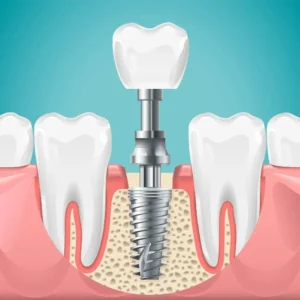
Essential Features for a Successful Dental Practice Website
In the digital age, the significance of having a robust online presence cannot be overstated. For dental practices, this begins with a comprehensive and well-designed website. Dental websites serve as a platform to inform potential patients about the services offered, the professionalism of the staff, and the overall ethos of the practice. They also play a key role in converting casual visitors into loyal patients. A successful dental website comprises several key features that contribute to its effectiveness. From intuitive navigation and engaging content to impressive visuals and sound SEO practices, each element plays a crucial role in shaping the user’s perception of the practice. This article explores these essential features, providing insights into creating a dental website that stands out from the crowd and effectively caters to the needs of its users.
Understanding the Importance of Dental Websites
Dental websites go beyond being mere digital brochures; they’re a critical cog in the practice’s marketing machinery. They offer an opportunity for practices to establish their brand identity, showcase their services, and most importantly, build trust with potential patients. Websites serve as a bridge between practices and the digital-savvy public, offering an accessible platform for people to explore their dental health options. They also allow practices to demonstrate their commitment to patient education and open communication, two factors that can significantly influence a person’s choice of dentist. In essence, with the right features and design, a dental website becomes a powerful tool that can drive practice growth and patient loyalty.

Core Components of a Successful Dental Website
A well-crafted dental website integrates several core components to deliver a seamless user experience. First off, intuitive navigation is key – users must be able to find what they’re looking for with minimal effort. Secondly, the relevance and quality of content matter – it should educate and engage visitors, compelling them to consider your services. A section detailing the qualifications and experience of the dental team can also inspire trust and credibility. Finally, the inclusion of clear and easy-to-find contact information, as well as online booking functionality, can significantly enhance user convenience. Each of these components contributes to creating a dental website that not only attracts but retains visitors, eventually driving them towards taking the desired action, such as booking an appointment.
Creating a Positive User Experience
Creating a positive user experience goes beyond aesthetics; it’s about ensuring website visitors find what they’re looking for swiftly and efficiently. Dental websites should be designed with the patient’s journey in mind. This includes easy-to-use menus, clear and concise content, and fast-loading pages. Additionally, providing interactive features, such as an online chat or appointment booking system, can also enhance the overall user experience. Furthermore, a responsive design that works seamlessly on various devices is crucial in this age of mobile browsing. A positive user experience can significantly reduce bounce rates while increasing time spent on the site, contributing to better patient engagement and conversion.
The Role of Content in Dental Websites
Content is the cornerstone of any successful dental website. This includes both the visible textual content and the unseen elements that contribute to search engine optimisation. Textual content should be informative, offering insights into the services provided, the ethos of the practice, and the team behind it. It’s also vital to ensure content is written in a clear, easy-to-understand language, making it accessible to a broad range of website visitors. Unseen elements, such as meta descriptions and alt tags, are crucial for SEO, helping to boost the site’s visibility on search engines. Quality content not only attracts and retains users but also plays a critical role in the website’s ranking on search engine results pages.
The Impact of Visual Elements on User Engagement
Visual elements play a pivotal role in shaping users’ engagement with dental websites. High-quality images and videos not only make a site more appealing, but they can also showcase the practice’s facilities and the team in action, helping to foster credibility and trust. Additionally, a clean and modern website design, complemented by easy-to-read fonts and harmonious colour schemes, can enhance the site’s overall aesthetic appeal. Infographics can be used to visually present complex dental information in an easily digestible format. These visual aspects can significantly improve user engagement, keeping visitors on the site longer, and encouraging them to explore further. Remember, first impressions count, and in the digital world, it’s often the visual elements that make the most immediate impact.
Leveraging SEO for Increased Visibility
Search Engine Optimisation (SEO) is a crucial factor in enhancing the visibility of dental websites. Effective SEO strategies involve the use of relevant keywords, comprehensive meta tags, and high-quality link building. These strategies allow search engines to understand the content of your site and index it effectively, thereby increasing its visibility on search engine results pages. Furthermore, local SEO strategies help to attract potential patients in your geographical area, making your practice more accessible to those seeking dental services. SEO isn’t just about driving more traffic to your site; it’s about attracting the right kind of visitors – those who are likely to convert into patients. Therefore, leveraging SEO effectively is integral to building a successful dental website.
Any surgical or invasive procedure carries risks. Before proceeding you should seek a second opinion from an appropriately qualified health practitioner.












